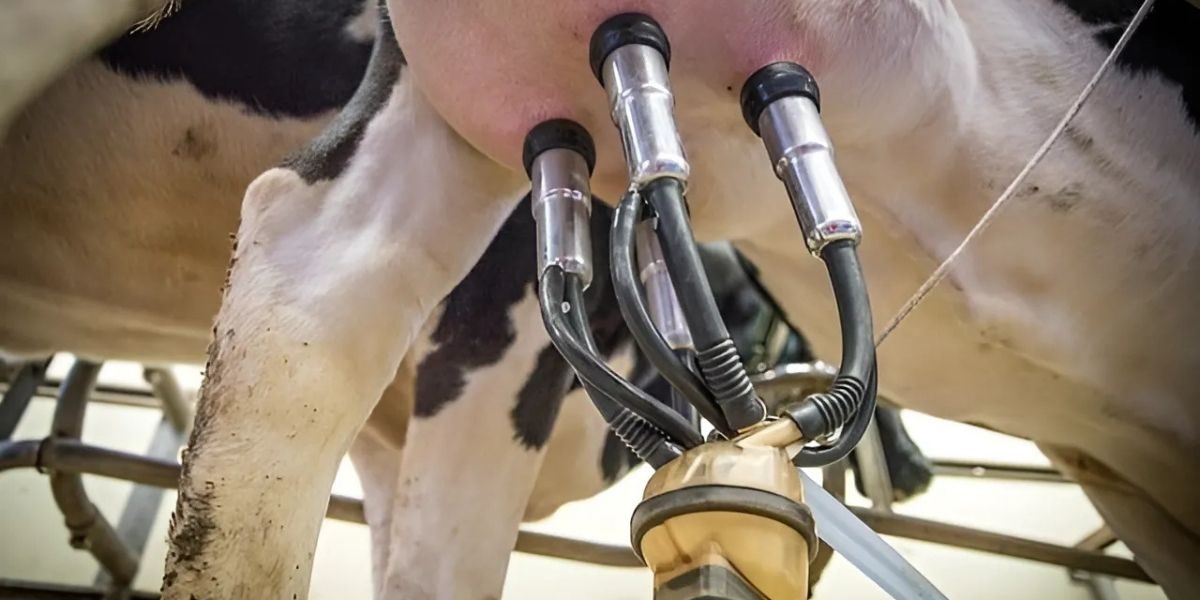A milking parlor is a specialized facility designed to streamline the process of milking dairy animals, primarily cows, in an efficient, hygienic, and controlled environment. Unlike traditional hand-milking methods, modern milking parlors integrate advanced technologies that enhance productivity, animal welfare, and milk quality.
In this post, written with the help of Milkline, we will delve into the key components, types, benefits, and operational insights of milking parlors.
The Purpose of a Milking Parlor
The core objective of a milking parlor is to facilitate the systematic extraction of milk while ensuring:
- Efficiency: Reducing milking time and labor costs.
- Hygiene: Minimizing contamination risks to ensure high milk quality.
- Animal Comfort: Providing a stress-free environment for cows.
- Operator Safety and Comfort: Ergonomically designed spaces to reduce physical strain on workers.
Key Components of a Milking Parlor
A modern milking parlor consists of several critical components:
- Milking Stalls: Designed to position cows comfortably and securely.
- Milking Machines: Automated systems that extract milk efficiently using vacuum technology.
- Milk Lines and Pipelines: Transport milk from the udder to storage tanks while maintaining hygiene.
- Vacuum System: Provides the necessary suction power for milking units.
- Pulsation System: Alternates suction and release to mimic natural suckling, ensuring udder health.
- Milk Cooling and Storage Equipment: Rapidly cools milk to preserve quality.
- Cleaning Systems: Automated CIP (Clean-in-Place) systems to maintain hygiene standards.
Types of Milking Parlors
Milking parlors come in various configurations to suit different herd sizes and farm management styles:
- Herringbone Parlor: Cows stand at an angle (typically 45 degrees) to the milker. It allows easy access to the udder and is suitable for medium to large herds.
- Parallel Parlor: Cows stand perpendicular to the milker, with rear access to the udder. This design is compact and supports high throughput.
- Rotary (Carousel) Parlor: A circular platform rotates slowly, allowing cows to enter, be milked, and exit in a continuous flow. Ideal for large-scale operations due to its efficiency.
- Tandem (Side-Opening) Parlor: Cows stand nose-to-tail, with individual stalls opening for entry and exit. Provides excellent individual animal handling.
- Robotic Milking Systems (Automatic Milking Systems – AMS): Fully automated systems where cows are milked by robots at their own convenience. These systems enhance labor efficiency and animal welfare.
Benefits of Using a Milking Parlor
Using a milking parlor significantly improves milking efficiency, as it allows for faster milking processes while reducing the need for extensive labor. This efficiency not only saves time but also lowers operational costs.
The controlled environment within a milking parlor greatly enhances milk quality by minimizing the risks of contamination, ensuring that the milk remains fresh and safe for consumption. Moreover, milking parlors are designed with animal welfare in mind, offering comfortable and stress-reducing conditions that promote better cow health and productivity.
Another advantage is the ability to integrate data collection systems, which connect with herd management software to monitor crucial metrics such as milk yield and cow health. Finally, milking parlors offer scalability, making them suitable for both small farms and large dairy operations, allowing them to adapt as the farm grows.
Operational Ideal Practices
To maximize the benefits of a milking parlor, regular maintenance of equipment is essential to ensure everything functions correctly and to prevent unexpected downtime. Proper cow handling is also crucial; training staff in low-stress handling techniques can significantly improve both animal welfare and milking efficiency.
Maintaining strict hygiene protocols is vital to uphold milk quality, which involves implementing rigorous cleaning routines for all equipment and facilities. Additionally, utilizing monitoring systems, such as sensors and data analytics tools, helps track the performance of both the milking process and the health indicators of the herd, enabling proactive management and continuous improvement of the dairy operation.
Published by Iris S.

















